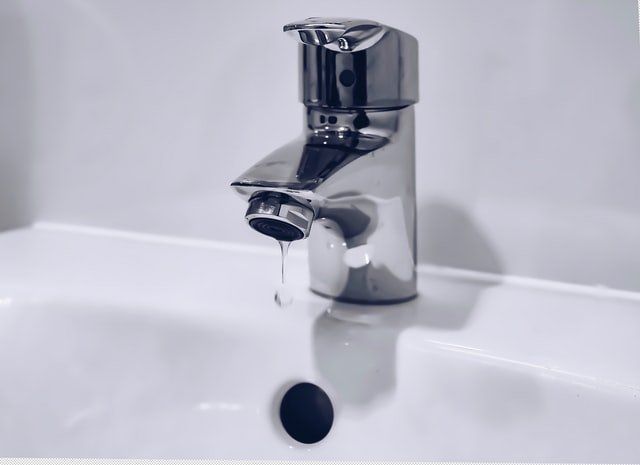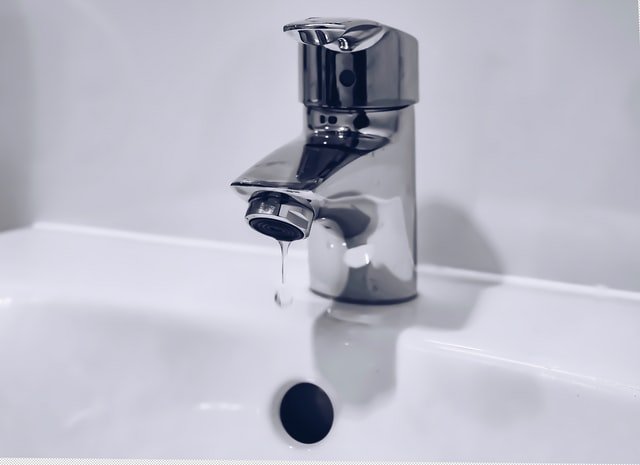There are many ways to reduce water use. This article focuses on household water use including the garden and provides an overview of the effectiveness of some water-saving devices.
Leaks due to rust or worn-out toilet flappers account for about 10% of indoor water use. Replacing leaking valves and faucets and installing water-saving appliances such as WaterSense labeled faucets and showerheads help reduce household water use. Additionally, rainwater harvesting helps reduce garden water use.
Besides becoming more eco-friendly, saving water is also an easy way to save money. For example, in the United States, the monthly water bill per household is around $70. Imagine paying only $35 because you cut your water usage in half!
Average water use per person
Water use per person differs widely from country to country. For example, the average American uses around 88 gallons (333 liters) per day per person in the household. The average European uses around 144 liters of water per day (38 gallons).
The graph above shows us that we have many options for saving water, but also that there is not one clear offender that we can tackle. Toilet use, showering, washing our clothes as well as our faucet each take up around one-fifth of our water usage.
Easy fixes for saving water
You already don’t leave the tap running unnecessarily, use the small button when flushing your toilet whenever possible and watch your time in the shower. So what else can you do?

Find hidden leaks at home
According to the Environmental Protection Agency every household contains several water leaks that, when fixed, can save about 10 percent of your water bill.
Common household leaks are:
- Worn toilet flappers
- Leaking valves
- Dripping faucets
How do you know if there is a leak?
One thing you can try is to check the water usage before and after a period when no water is being used. For example when nobody is at home for a few hours. If somehow your water usage changed, there is a leak.
For the toilet specifically, you can add a drop of food coloring to the toilet tank. If any coloring appears in the toilet bowl within about 15 minutes, you have a leak. A toilet leak can be due to the flushing mechanism being a little stuck, or because of a worn-out flapper. You can find a new flapper at your local DIY store or here on amazon. It will pay for itself by reducing your water bill!
Leaking valves and pipes are quite common and easily detected. Check for rust or moisture around pipeline bends and welds. You can open and close a valve and see if water is coming out where it should not.

Dripping faucets are usually caused by malfunction of one or more of its parts. If you have some tools at home you can disassemble the faucet to check the inside. Don’t forget to turn off the water supply first. See a damaged gasket or rusty parts? You should be able to buy new parts at a local DIY. You can also try to contact the manufacturer to see if you have a warranty and can get some new parts for free.
EPA Watersense
The Environmental Protection Agency in the US created a label called Watersense for products with high water use efficiency. You can spot them by the EPA Watersense logo.

Products with the Watersense logo range from toilets and urinals to showerheads, faucets and irrigation systems.
The best small water-saving devices
We have identified several good water-saving devices that all have a Watersense label.
Faucet aerator
An aerator is a cheap add-on to your faucet that reduces the water flow without reducing pressure. I found this excellent Watersense aerator on amazon. It includes a timer option and can save up to 84% of your faucets water use. You can easily install it yourself without any tools.
Dual flush converter
A dual-flush converter is an add-on for your toilet tank. It replaces the regular flapper system with an option for liquids (less water) and an option for solids (regular flush volume). A dual-flush converter can save up to 67% of yout daily toilet water use.
Water saving showerhead
A water-saving showerhead is an easy way to reduce your water usage in the shower without having to reduce your showering time. Of course saving water on your shower also saves the energy to heat the water. There are many different types of showerheads so we selected the best and most energy-efficient options per category.
The Kohler 22169-G-Cp Forte is one of the highest-rated Watersense showerhead. The water use is 1.75 gallons per minute (gpm), which is a reduction of 30% water use compared to a regular 2.5 gpm showerhead. The Kohler is a more luxurious showerhead with a rain, massage, and silk spray option.
The Kohler Forte showerhead (amazon.com)
A cheaper showerhead that won a Watersense Excellence Award is the High Sierra all metal 1.5 gpm showerhead. This showerhead only has one full spray, large drop function. But it saves you about 40% of your water use compared to a standard 2.5 gpm showerhead.
The High Sierra showerhead (amazon.com)
If you prefer a showerhead that can be used as a hand shower as well, the Delta in2ition is one of your best options. This Watersense labeled showerhead has three showering functions and uses 2.0 gpm.
The Delta In2ition showerhead (amazon.com)
Rainwater harvesting
On average, in the United States, 30% of water use does not occur indoors. The most common outdoor water uses are watering the garden and washing the car. To reduce your outdoor water usage, you can easily install a rainwater harvesting system.
Already have a rainwater harvesting system? The capacity could be a limiting factor, and you might be able to save more water by increasing it.
A rainwater harvesting system can be as easy as buying a water barrel and leading the gutters toward it. Rain barrels are an easy way to collect many liters of water for outdoor purposes. For example, a rainwater barrel that can store 50 gallons of water is effectively storing about 40 dollars worth of water for free.
Rainwater barrels can look very good as well. For example, this Rain Wizard rainwater barrel on vminnovations.com is very aesthetic. Another option is a rainwater barrel that looks just like a rock.
Overview of potential water savings
Table 1. Overview of potential water savings
| Toilet | Shower | Faucet | Outdoors | |
|---|---|---|---|---|
| Avg. daily use (gallons) | 15 gal | 12 gal | 12 gal | 26.4 gal |
| Water saving measure | Dual flush | Saving shower- head | Faucet aerator | Rain barrel |
| Total water saving per day (gallons) | 10 gal | 7 gal | 10 gal | Up to 50 gallons per usage |
| Total water saving per day (%) | 11% | 8% | 11% | – |
Bonus: a game-changer for your water use
The following device is a real game-changer for your water use by cutting your water use in half! It requires some more upfront costs but will pay itself back over time by reducing your water bill.
Hydraloop
In early 2020 a new decentralized water-saving system called Hydraloop was presented at the Consumer Electronics Show in Las Vegas. Hydraloop took home four awards, including the overall prize ‘best of the best’.
A Hydraloop unit can save up to 45% of your daily water use by cleaning already used water in your household. The Hydraloop system cleans your gray water so you can use it again. Gray water is wastewater from all your water usage except for toilet water. So this includes the shower, dishwasher, washing machine, etc.
The costs of a Hydraloop unit start at $4.000, excluding VAT, so you have to be willing to invest. However, a Hydraloop system recycles 85% of your indoor water, saving up to 45% of daily water use. This will reduce your water bill significantly. A quick calculation shows that by saving 45% of your monthly water bill of $70, you will save $378 per year. Find out more at https://www.hydraloop.com/.






